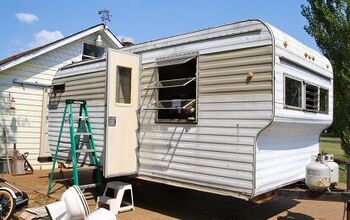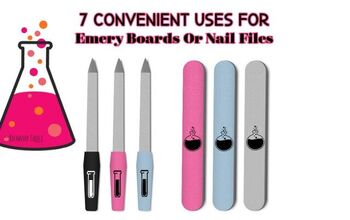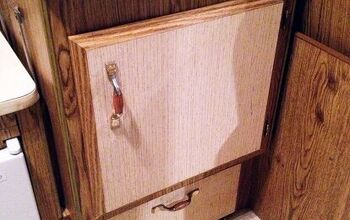Seven Easy Steps To Break The Clutter Cycle

Have you ever noticed that clutter attracts more clutter? It’s true! In fact, it is a universal law that like attracts like.
One example of the “clutter attracting clutter” principle was evident in the kitchen sink at my old home in Maryland. I noticed that as soon one cup, one plate or yes, even a fork, was left in the sink, everyone in the home saw it as an invitation to add more items to the collection. I have seen this universal law in action time after time in the homes of friends, family and clients.
A second universal law is that nature abhors a vacuum (no, not a cleaning vacuum!). Any empty space, such as a dresser top, a kitchen table or even a chair can easily become host to an unidentifiable collection of random objects that continue to grow and grow if left unchecked.
What are we to do? This seven step process will help you break free of the clutter cycle, bit by bit, surface by surface!
1. Notice Where Clutter Collects
The first step is to notice where clutter accumulates. Where are your “hot spots?” Sometimes we become so accustomed to seeing an untidy collection of objects that we actually no longer “see” it. One of my clients shared that she believes that when objects sit untended for a long period of time, an energetic film grows over them which makes them difficult to see.
Begin seeing where clutter collects by pretending that someone is about to come visit for the first time. Walk around and look at your things through the eyes of this real or imaginary visitor. Suddenly, spaces and areas of clutter come into view that you may have passed many times!
Another powerful way to “see” your spaces with fresh eyes is to take digital pictures. This will help not only to bring things into your consciousness, but it will also be helpful in step 3 (when you break tasks down into manageable chunks).
2. Make The Choice to Declutter
Step two is make the choice to do something different to create a new reality for your space and your life. Reflect on the benefits that creating this new, less-cluttered reality will offer you. Focusing on your desired outcome will help to fuel your decluttering efforts!
Be careful to avoid self-criticism and judgement. Simply set your intention to deal with the clutter problem and pat yourself on the back for being brave enough to acknowledge your role in the situation and to look for new ways to move forward. If others in the household play a role in a particular area of clutter, you may benefit from our book on clutter and relationships.
3. Make The Time to Declutter
A huge part of breaking the clutter cycle is to recognize that this situation did not appear overnight. It will take time to dismantle the clutter patterns and identify new habits to keep the clutter from reappearing.
Here’s an important reality check: dealing with the accumulation of stuff will likely take more time than you would like. Take a close look at the area you wish to address and estimate how long you think that it will take to go through the items and make decisions about each one. A good rule of thumb is to add at least 20% to your time estimate.
Check out our How Long Does It Take to Declutter A Home above for more info!
4. Break Decluttering Down
A good way to reduce overwhelm and make a daunting task possible is to break large tasks into a series of manageable action steps. It is helpful to write each of these steps down and then assign time estimates for each small goal. For example, a goal of eliminating clutter on a kitchen table might involve steps such as these:
- Sort all of the accumulated items into logical categories. You might do this on the table or grab some bags or boxes into which to sort. Keep the categories broad at first and allow for a miscellaneous category for things that don’t seem to go with other objects on the table. Make sure you include a “relocation” bag or box for items that belong elsewhere in your house. More on this here!
- Once the broad sort has been accomplished, pick one of the categories and determine whether it would be helpful to break it into more categories. If not, move on to the next step!
- Ask yourself “does this group of things belong in this room?” If so, is there a logical place for them to go? If yes, put them in this logical place. If no, reflect on where it makes the most sense for this collection to go.
- For example, if you have a collection of papers or reading material, you might join this collection with other papers or reading materials in the home. It may be wise to make a list of any objects that represent to-dos or are reminders to you of actions you need to take.
- You can then repeat the last two steps for each remaining category of objects. If you are feeling tired, hungry or in need of a break, take a few minutes after dealing with each category to celebrate your progress, stretch, or get a bite to eat or have a drink.
5. Face Your Clutter Demons
Take some time to celebrate the progress that you have made and acknowledge any parts of the process that you found difficult or felt like running away from. You might journal about your experience or share it with a friend or loved one.
If you feel that you absolutely cannot face the prospect of continuing to tackle this clutter alone, consider who might be able to help you to face the challenge. We are always here to support you.
6. Accept Support
The way that humans have made tremendous advances throughout our evolution is by learning from and relying on each other. We all have unique strengths and talents, and it is by being willing to ask for support when we are stuck that we move from the stuck place to a place of feeling success and joy.
There is no shame in looking for support when you find something difficult and we are here to willingly provide that support when and if you need it.
7. Create Clutter Accountability
It is helpful to have a second person who can provide accountability for you as you set goals and timeframes for your decluttering project. Tell someone about your goals and share with them the time in which you plan to achieve them. You might ask this person to check in with you at a specific time and ask how you are progressing. Be sure to choose someone who is non-judgmental and understanding. You might also offer to support them in meeting a goal of their own. 🙂
What Does A Clutter-Free Life Look Like?
A clutter-free life involves more than clearing your space of physical clutter; it includes freeing your mind of limiting beliefs and other mental clutter and liberating yourself from commitments that do not bring you joy or move you towards your goals. It involves embracing new, more productive habits and being patient with yourself as you establish them.
If this resonates with you, we would love to hear about your clutter goals and stuck spots. Schedule your free 20-minute exploratory Zoom with Pam. What do you have to lose?
Did you like this post? Share it on Pinterest!
Image by Dan Gold and Chua Bing Quan





















Comments
Join the conversation